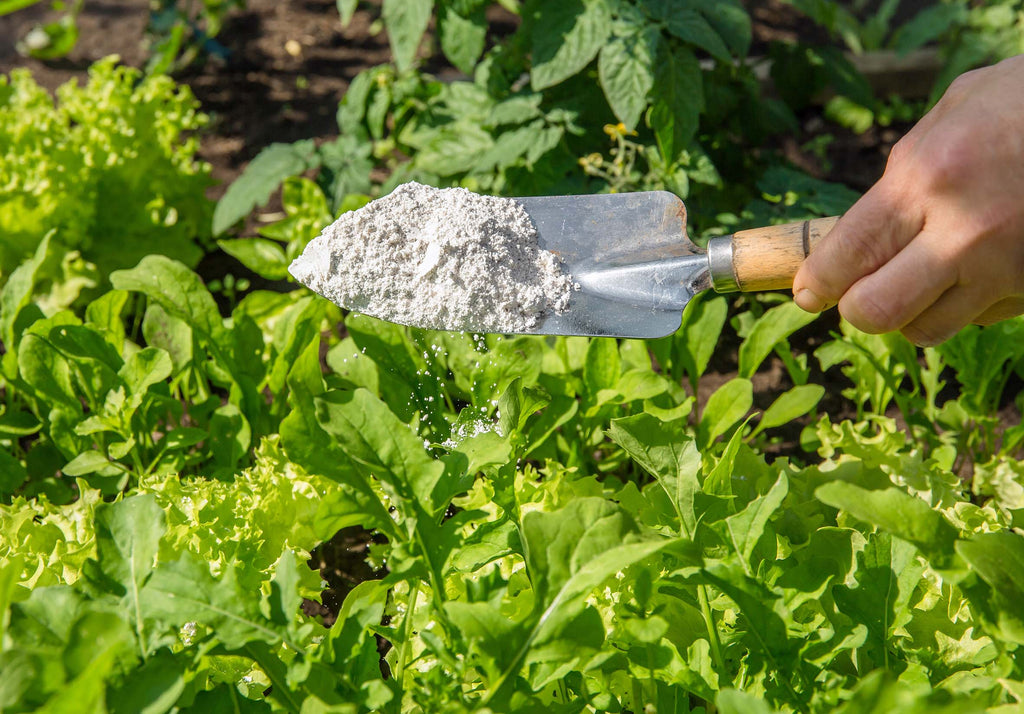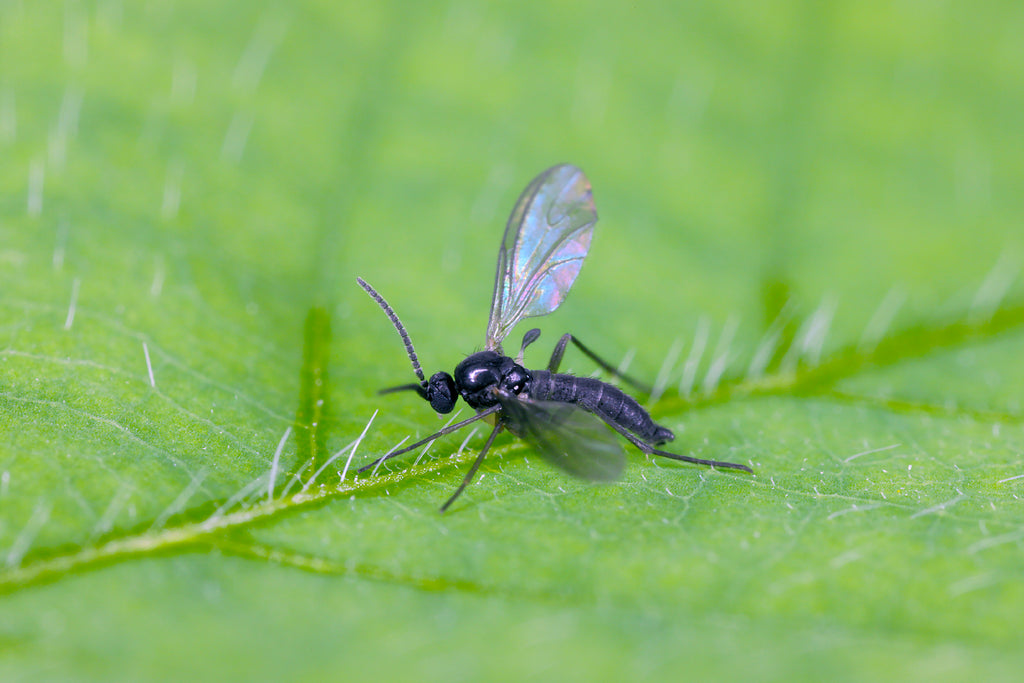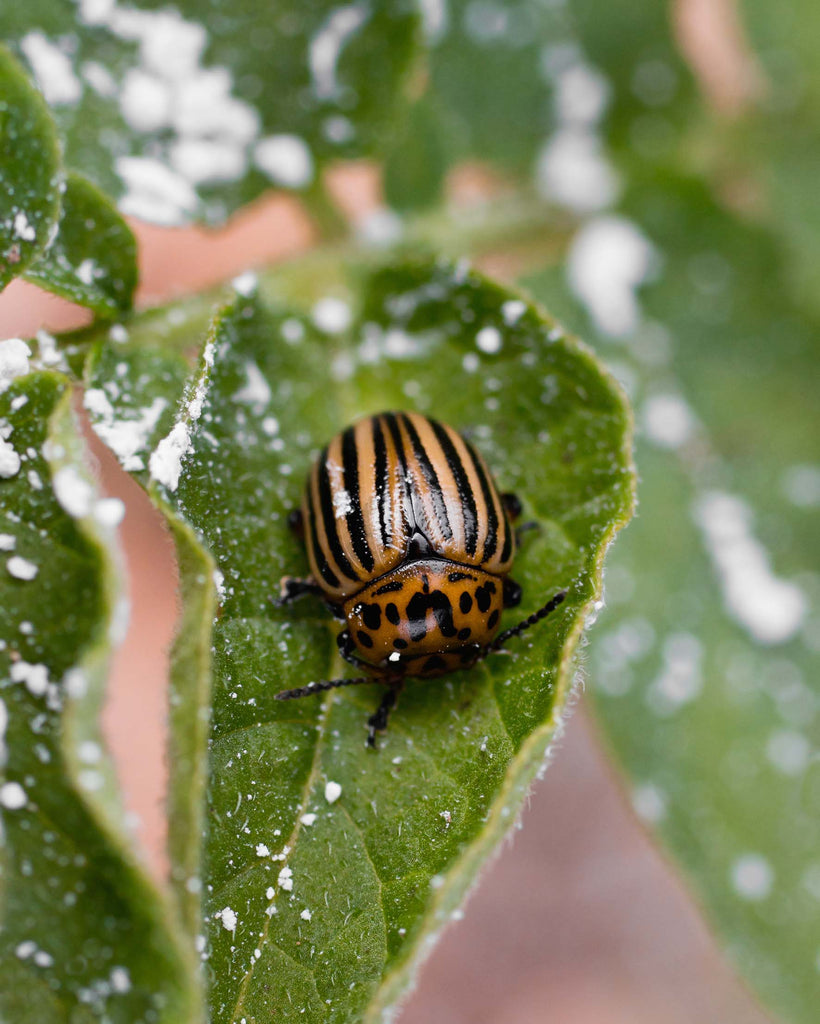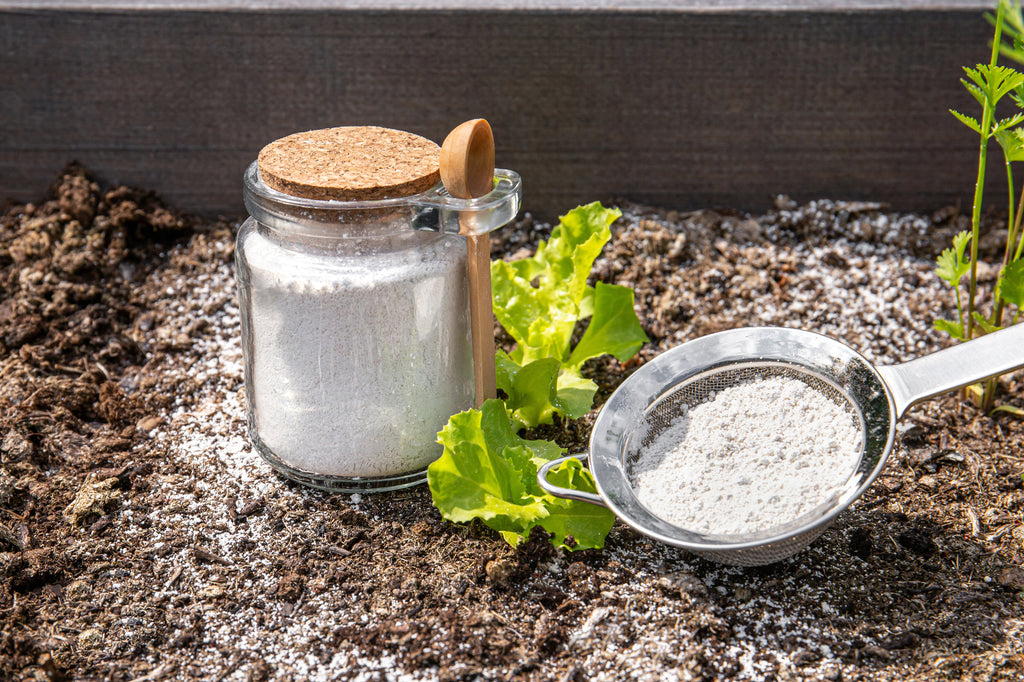Nobody wants flies, especially little gnats, in their home. Unfortunately, when you have houseplants, this is a common risk.

Fungus gnats are a kind of small black gnat in the Sciaroidea superfamily that eats fungus.
They frequently infest home plants that have been overwatered, kept in extremely damp circumstances, or are infected with other pests like as aphids.
The real issue is that they nibble on the roots of your plants while foraging for fungus.
Many popular pest control methods will not work because the larvae prefer to burrow into wet plant soil.
But what about diatomaceous earth for fungus gnats, the traditional soil remedy?

Is Diatomaceous Earth effective against fungus gnats?
The good news is that diatomaceous earth (or DE for short) is a powerful fungus gnat repellent.
The bad news is that you'll still have them around for a week or two.
What exactly is diatomaceous earth?
If you've been living under a rock, you're probably already acquainted with diatomaceous earth for fungus gnats(DE), but for those who aren't, it's an all-natural, non-toxic insect killer.
It's formed from crushed diatom fossils, a primitive, tiny lifeform.
DE, due to its microscopic size, feels more like extremely fine sand or powder to the touch, but to smaller animals, it seems like shattered glass.
DE has been used as an excellent rodent deterrent and is a natural insect and spider killer.

Sharp fossilized shell shards lacerate a bug's exoskeleton, causing it to lose body fluids until it dehydrates to death.
The Real Danger of Fungus Gnat Larvae
While adult diatomaceous earth fungus gnats are just a threat to your sanity, an adult female's capacity to lay up to 200 eggs can be a more serious problem.
During her one week of life, she buries them near the surface of the earth.
The larvae crawl into the dirt once the eggs hatch.
Once there, they will eat whatever fungus or organic stuff they come upon, including plant roots.
A single fertilized fungus gnat female may cause a severe population explosion in record time if left unchecked.
To combat the underlying problem, though, you must treat the soil itself.
This is where DE comes into play.

Diatomaceous Earth Used to Kill Fungus Gnat Larvae
When treating plants, always use food-grade diatomaceous earth for fungus gnats since pool grade has dangerous quantities of silica.
Allow the soil mix to dry before adding the DE, since wet DE loses potency.
After the potting soil has had a chance to dry, sprinkle the DE directly into the soil in a thin layer.
The DE covers them with incisions that will quickly kill them when adults land on the soil surface or young animals try to push through the ground.
Of order to prevent bugs from entering through the drainage holes in a container, several plant enthusiasts advise sprinkling DE under it.
The technique can take some time to completely eradicate the fungus gnat population because the DE only affects diatomaceous earth fungus gnats as they attempt to puncture the soil surface of your plant.
Treatment and Prevention Techniques
One of two things can cause fungus gnats to appear: excessive moisture or current infestations.
Make careful to routinely administer preventative treatments to your plants, such as neem soil soaks or neem foliar sprays.
The partially digested secretion known as honeydew is left behind by piercing insects like scale and aphids.
If not removed, this honeydew can cause fungal illnesses like sooty mould and attract ants.
Any plants that have a fungal infection should be isolated.
Although the fungus or mould may not spread to neighbouring plants, it will draw fungus gnats.
The gnats will lay their eggs at any surrounding plants in addition to the one that is infected.
A frequent infection that can be either bacterial or fungal in origin, root rot, can also be brought on by overwatering.
Fungus gnat larvae are attracted to the roots by root rot and will do even more damage there than the rot itself.
Use the finger method to determine when a plant genuinely needs watering and only water it when necessary.
Finally, even when the infestation is gone, your plant can still be sick. Place it in a spot where it may receive the optimum lighting and temperature, and watch out for proper fertilisation during the healing process.
As an additional protective measure, you could choose to sometimes dust the plant with DE, but keep in mind that the DE will be washed away with the subsequent irrigation or rainfall.
Why Choose Diatomaceous Earth Is Used Instead of Toxic Chemicals To Kill Fungus Gnats
Those diatomaceous earth plant flies, the ones that repeatedly fly out of your plants and land all over you. Unfortunately, they are common while keeping indoor plants and resemble fruit flies.
They are found in the soil of your plant, which has a lot of moisture and humidity. Therefore, it is more crucial than ever (especially in the winter) to avoid overwatering, although doing so won't permanently get rid of fungus gnats.
The most frequent pest of houseplants is the fungus gnat, and while the adult fly won't harm you or your plant, it sure is bothersome, and if you don't keep it under control, it can spread like wildfire!
The juvenile larvae of fungus gnats, which are buried in the soil and can feed on your plant's fine root hairs, can become a problem, slowing growth and potentially turning your leaves yellow. You often hear us harp on about letting your pot soil totally dry out a few inches between waterings because the gnats prefer to deposit their eggs in moist soil. In this manner, there aren't enough fungi, algae, or decomposing materials for the larvae to eat.
There are many natural ways to get rid of fungus gnats, like leaving vinegar trays around, sprinkling cinnamon on the soil and pot rim, spraying neem or white oil, or setting up yellow sticky traps, The juvenile larvae of fungus gnats, which are buried in the soil and can feed on your plant's fine root hairs, can become a problem, slowing growth and potentially turning your leaves yellow. You often hear us harp on about letting your pot soil totally dry out a few inches between waterings because the gnats prefer to deposit their eggs in moist soil. In this manner, there aren't enough fungi, algae, or decomposing materials for the larvae to eat.
There are many natural ways to get rid of fungus gnats, like leaving vinegar trays around, sprinkling cinnamon on the soil and pot rim, spraying neem or white oil, or setting up yellow sticky traps.
How does it function?
Small Fungus Gnat larvae and any other insect that tries to walk through DE will be torn to pieces by microscopic silica shards (a hard, inert, colourless substance that exists as the stone quartz).
Additionally, it will eliminate other typical houseplant pests including aphids, spider mites, and mealy bugs!
How should it be applied to indoor plants?
Put a layer of the powder on top of the soil in your potted plant. The ideal time to add is when the soil seems dry to the touch, but before your plant needs watering immediately (soaking up water will make it ineffective).
The best part is that it is completely safe to use around food and pets at home (as long as you get the food-grade version). However, we do advise wearing gloves and a mask to prevent the tiny particles from entering your lungs because, like any fine dust, they may make you sneeze or cough. Masks can also be made of a scarf or something similar put around your mouth and nose.
The next time your plants need watering, we additionally advise increasing your treatment approach with diluted neem oil (available from any decent nursery) so that it soaks through the soil completely if your fungus gnat problem is somewhat out of control.
If you've been using these ways for several months but feel like you're still losing control of them (and your sanity! ), you can try the extreme method and use some common fly spay. Every few days, spray the top layer of soil and any diatomaceous earth plant flies you notice buzzing. God knows what's in those cans of death, therefore we don't love this approach, but desperate times call for desperate methods!
Choose our best Natural Diatomaceous Earth for Fungus Gnats
Choose our 100% natural Anti Gnat Pot Topper to keep your home free from bothersome insects and gnats while also keeping your pets and children safe. Our solution may be used with every type of plant because it is PH neutral and increases moisture retention, keeping your indoor plants hydrated and healthy at the same time. It also has the additional advantage of providing beneficial plant nutrients. After use, it can be simply incorporated into the soil or transferred to a different pot for safety.
Final words
For optimal outcomes spread a 3/4-inch layer of the Anti GNAT mixture, just remove 1/2 inch of top soil and any organic materials, making sure to completely cover the surface. Anti GNAT can acquire the yellow/brown colour of the tannins found in organic materials since it is a very absorbent material. This is harmless and natural. This might be avoided by using a soil instead of a compost, or a compost that has less organic matter.




